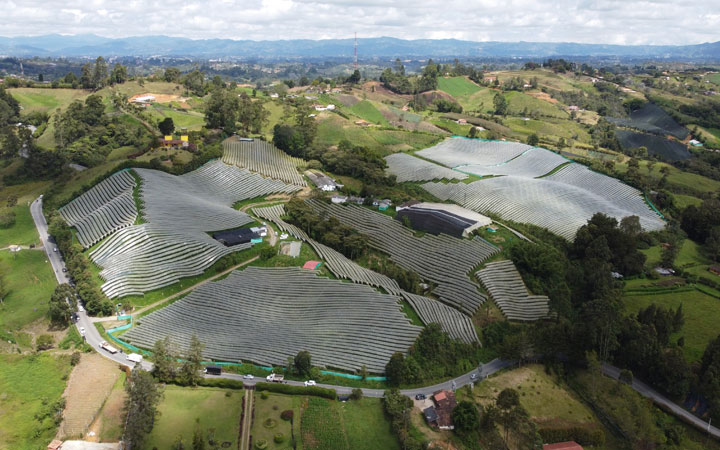All about gulupa exports in Colombia

The export of gulupa in Colombia has taken a strong boom with an impact on the industry and economy. Colombia exports at least 75 million gulupa per year and projects much more.
How is gulupa cultivation in Colombia?
Growing, producing and exporting gulupa is not an easy task, it requires an adequate soil study, besides gulupa is a fruit that does not grow in any soil and does not receive water in the traditional way, it is necessary to create greenhouses to obtain a better fruit and a special treatment.
The gulupa has a great projection for international export, foreign markets see in the passion fruit, a powerful attraction for its return on investment.
If the gulupa is taken through a good process from planting, it is a fruit worth investing in for export!
This fruit is very diverse so it can be grown in different types of soil, however, the most advisable is the one with a sandy-loam texture. Learn more about how to improve soil health in gulupa crops.
And although gulupa is a difficult crop to manage, with good practices it is possible to obtain a fruit that is 100% exportable.
The impact and growth of gulupa exports in Colombia
For approximately 20 years it has been cultivated in different departments of Colombia. It is said that its cultivation began in the 1980s in the municipality of Jardín (Antioquia), from plant seeds.
The departments that currently export the most gulupa in Colombia are: Antioquia, Cundinamarca, Bogotá, Bolívar and Boyacá.
According to Agronegocios in a 2020 article: “In Colombia, gulupa is grown in 12 departments on at least 2,144 hectares.”, since we know the impact that this exotic fruit has in the country, we can predict that we have grown.

The gulupa is considered an export fruit, which tends more and more to an international public, in fact in the domestic market the fruit is not so profitable, and although Colombians consume gulupa, it does not have as much projection as in the foreign market.
Colombia’s geographical location facilitates the distribution and export processes of exotic fruits, since it has faster delivery and shorter transit times, as well as internationally competitive freight rates.
According to Procolombia (Exports, tourism, investment and country brand), common fruits in Colombia such as pineapple, coconut, mango and gulupa have become the most sought-after fruits by Europeans.
Different socioeconomic factors have been positioning these fruits as exclusive and the trend towards 100% natural fruit has turned them into premium products.
The gulupa is the third most exported fruit from Colombia, in 2021 it exported 9,813 tons reaching 42 million dollars according to data from the Dane analyzed by Procolombia.
According to Forbes, a magazine specialized in the world of business and finance: “Between January and March of this year, the gulupa reached US$16.4 million in exports, an increase of 22% compared to 2021, when the figure was US $14 million. While the exported weight increased from 8,766 net tons in 2020 to 9,813 tons in 2021.”
To which countries is gulupa exported?

Colombia is considered one of the 10 largest producers and exporters of gulupa in the world.
Currently there are several nations that prefer gulupa for consumption, but the main buyers are the low countries with a value of more than 85% in gulupa exports, then Belgium, United Kingdom, Canada and Italy, followed by the United States and Asia.
70% of the gulupa fruit in Colombia is exported
We confirm that the export of gulupa in Colombia has not only brought entrepreneurship and employment, but also a great improvement in the economy of our country, its projection and trend shows us that there is still a long way to go to conquer an international market.

